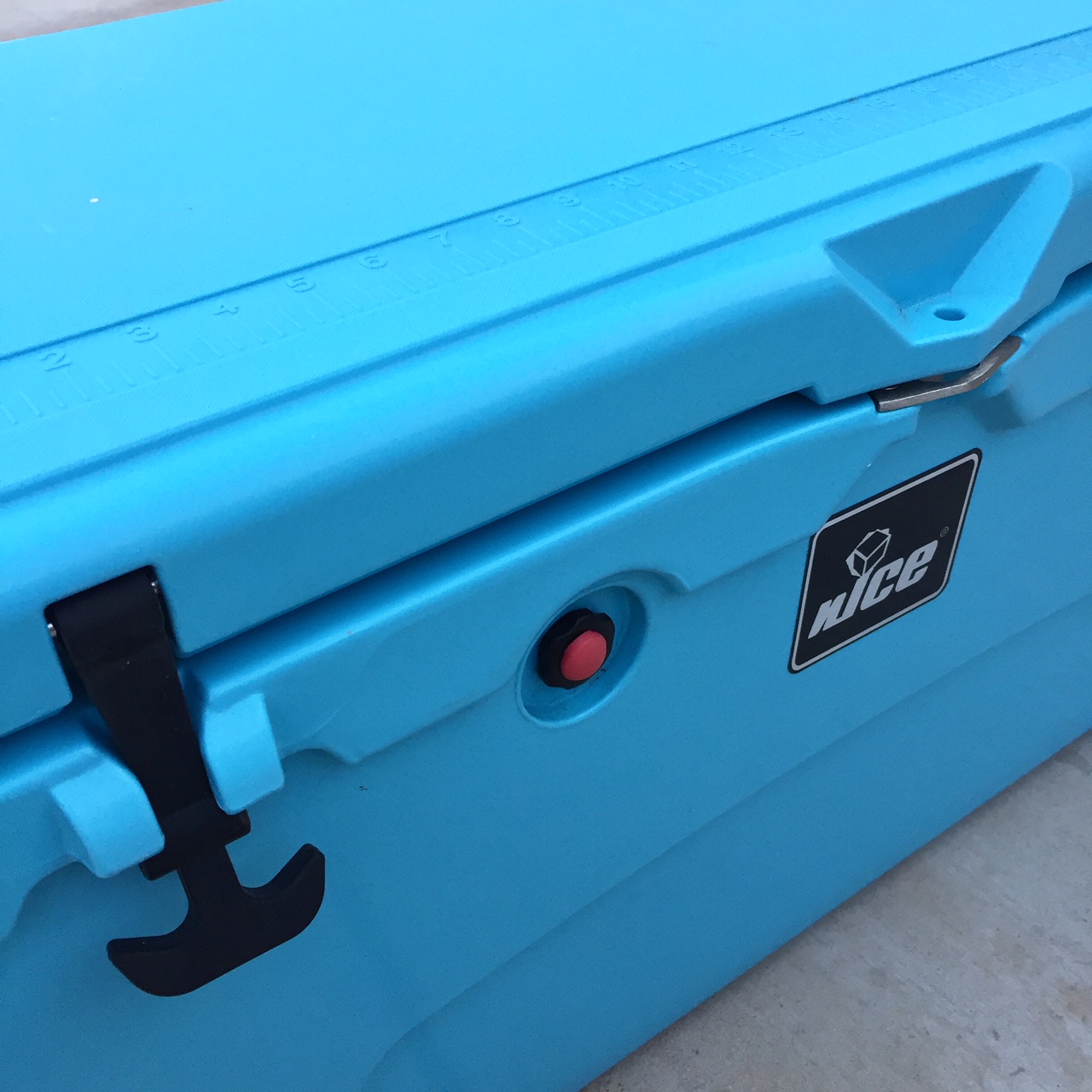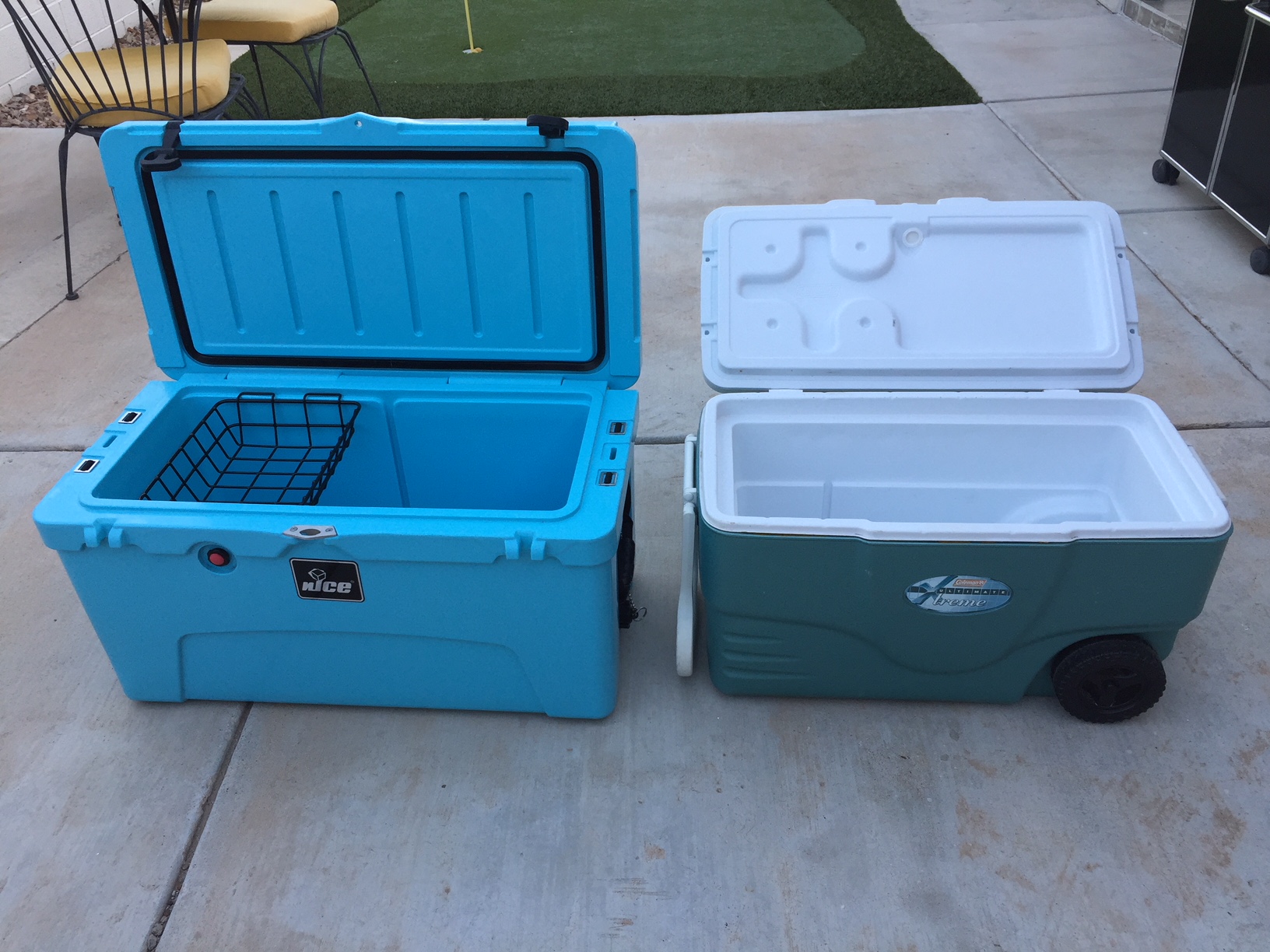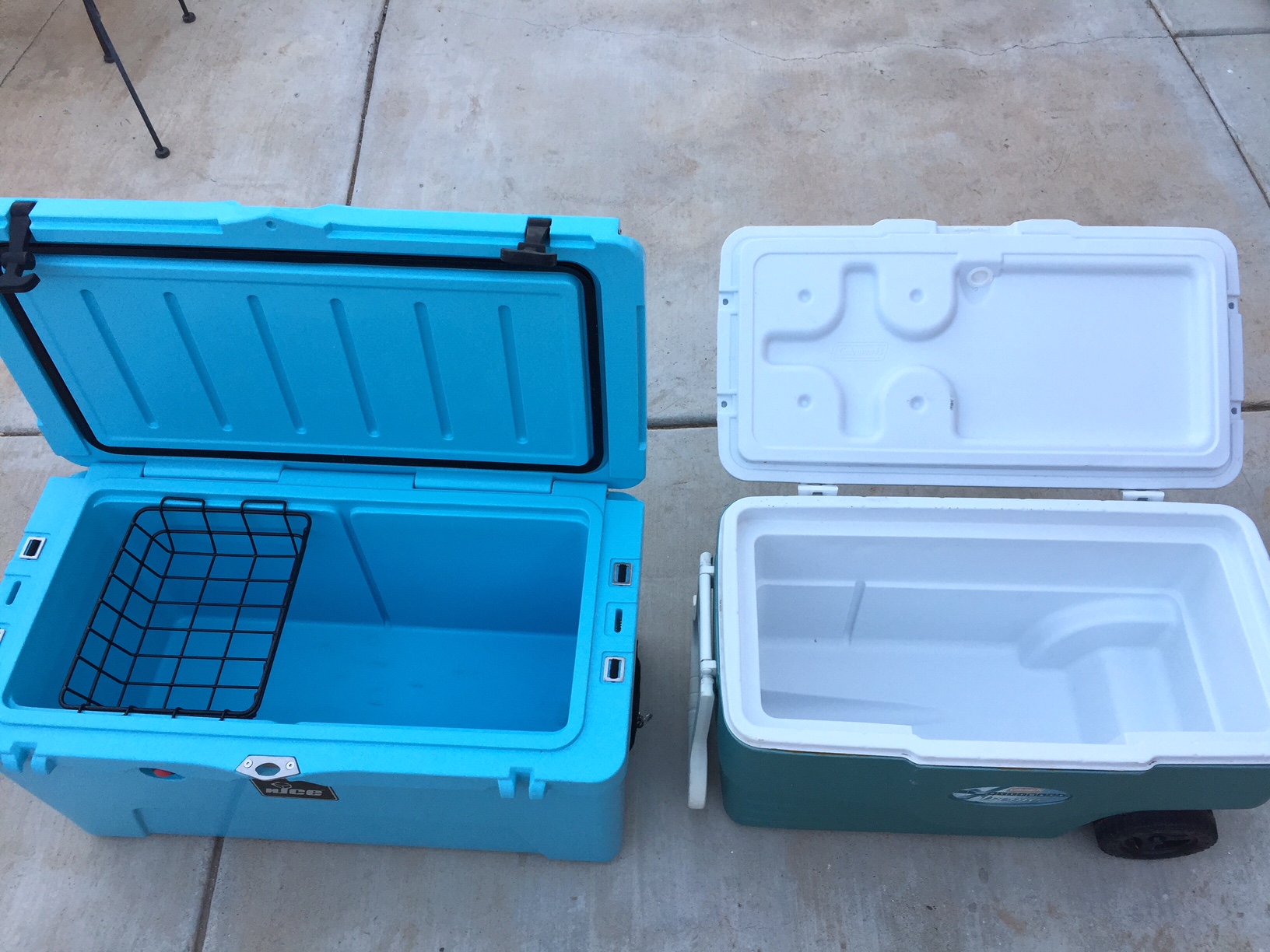“Meticulist” was selected as to not filter out any topics before the site was even created, since a lot of what make a “meticulist” is the process of researching, vetting, and making the best decisions possible with the information at hand. But with that said, this site is not a generic buying guide, or trying to be an expert in all things, and I am certainly no expert in coolers. Nor did I really have a strong interest in entering the seemingly newly created Dad-cred arena that is high end, roto-mold coolers. But, when you need a new cooler, and would rather buy nice than twice, here I am, and here’s what I found.
Purchasing Process
My typical extended camping trip relied on a wheelie Coleman with an estimated 75qt capacity and a roughly 40qt basic Igloo. To be honest, I’m not really sure where either one came from, and both have always “worked”, but the smaller Igloo had developed a nasty crack in the side. With an upcoming 6 night long camping trip, my initial thought was to keep using the large Coleman (which was getting pretty tired itself) and replace the smaller Igloo, keeping in mind that I didn’t really know of the sizing of either when I started researching. Knowing that both coolers have been with me for at least 8-10 years, I decided there was some value in buying a decent cooler and keeping it for a long time, but I immediately questioned why I would need to spend $400 on a Yeti when these seemingly standard coolers had held up for so long.
Roto-mold coolers are made from rotationally molded plastic, which creates a thick and uniformly consistent shell that is both more durable and also seamless and uniformly thick. This creates a better barrier for keeping the cold in and also keeping pests out, as many of the rotomolded coolers on the market are also certified bear proof. This thick shell allows the coolers to retain ice longer than more conventional coolers, but you’d be surprised that after doing some digging against some decent conventional coolers, it’s not necessarily a dramatic increase. Most are rated to around 7 days, whereas a good conventional cooler might be rated to 5 or 6. So, I still wasn’t completely sold that an extra day’s worth of ice keeping was necessarily worth the premium, but I did appreciate the construction was more robust and presumably durable.
Knowing that I appreciate something that is well made, and that I would want durability, I also valued the warranty, which is typically significantly longer with a rotomolded cooler. With most of the reputable brands offering 5 year, 10 year, or lifetime warranties versus a more typical 1 year warranty. But at this point, I still didn’t know if I was seeing the benefit of spending 3 or 4 times the amount for what would otherwise be a very good conventional cooler, like this Igloo Marine Ultra 72 for $109.
Enter the nICE coolers. Here, you get rotomold construction, 5-year warranty, and all or more features than the top Dad-cred brands for less than half the price. So, for not much more than a conventional cooler, I was able to get a certified bear resistant, well rated, and feature rich rotomold cooler. I say feature rich because the Yeti Tundra 75 benchmark in this category does not have integrated cup holders or bottle opener, pressure relief gasket, integrated lock, etc. at $450. The nICE 75 that I purchased has all these things and I can attest initial quality is very good at just $209 here. The pressure relief valve is particularly interesting because the main wear item on rotomolded coolers is the freezer style gasket that creates a good seal with the lid every time you open and close it, and these valves actually reduce some of the stress on this gasket, potentially prolonging the life.
Initial Review
What can I say, over the course of the trip the cooler worked…it kept everything cold and ice frozen. It was a breeze to drain, with the large threaded drain plug and was easy to get in and out of with the help of the pressure relief valve. Everything feels very robust and well built, and I’m pretty happy with it overall. The rubber latches create a nice secure closure, though one handed operation is a bit more challenging as compared to a conventional lift the lid type. I was worried the rope handles wouldn’t work that well, since sometimes the flexibility just creates awkward angles, but the ropes have good length on them, and we had no problems carrying or loading the cooler.
I will say that this particular color, the light blue, is very blue, but I liked that it was a little different. I actually wanted the seafoam a little more, but was unable to find that color at this price in short time. The one negative I do have of rotomolded coolers in general, is that they’re heavy, really heavy. This made getting the loaded cooler in and out of the vehicle a two person affair, and just moving it around the campsite a bit of a struggle. I knew this going into it, so it’s not a deal breaker, but something to definitely be aware of at nearly 32 pounds empty.
Last, but not least, the 75qt model is huge. I mistakenly identified the rolling Coleman I have as being a 100qt cooler, and thought this would replace my smaller blue one that was cracked. It’s actually larger than the rolling one I have, which ended up working well, since I only had enough room for one cooler in the car anyways. The 75 was able to carry all of our food and drinks for the 6 days, and I used about three or four, 8lb bags of ice total (I used some ice from my fridge), though I might have been able to get away with less since I came home with everything still cold and ice in the cooler. I suspect the 45qt size would be the more universal for most, and that size might have been better for more everyday use for me as well, only time will tell.
Others Considered
There are a number of rotomolded coolers on the market now, just take a look on Amazon of how many different brands there are. I only opted to vet brands I could find reviews on elsewhere or that had a robust warranty, since there’s no telling how long some of these companies will be in business once the market is saturated with competition.
My main runner up was the Grizzly with its lifetime warranty. It does not have integrated cup holders and is more expensive, and what was confusing at the time of purchase is their Amazon page listed one price, but when you go to purchase the price was higher. This was kind of a turn off, and ultimately went with the nICE. The Grizzly coolers are made in the US, and have been around for a long time, much longer than the rotomold trend. $299 for the 75qt here.
The Igloo IMX 70 was another I strongly considered. It looks great and has the stats and features to back it up, but it's injection molded vs rotomolded, and with very little in the way of reviews or third party info, it was difficult to determine if that mattered. It has a 5 year warranty and comes in much lighter at 25.8 pounds, but I just couldn’t find any reviews or information on them to justify paying a little more at $229 here.
Last but not least, was a good old fashioned Igloo Marine Ultra 72, weighing in at just 11.6 pounds with a 5 day ice rating. This cooler is just a basic old school standard that very well might have lasted me as long or longer than my nICE purchase, but did not have the same warranty at just 1-year, plus Dad Cred.
So, we will see how the nICE holds up long term, but in the interim, I’m happy to report finding a quality rotomolded and feature rich cooler with a price point that sits in between conventional coolers and name brand rotomolded options. Plus, it’s available on Amazon Prime! Stay cool!





